Intro
There’s a big range of styles of mountain bike shorts out there, from options that are equally viable for everyday casual wear, to super technical pieces with elaborate bike-specific features and exotic materials. There’s a place for all of those styles out there, but how do they really differ, and what makes the most sense for you? We’ve been spending time in a wide variety of options, and there’s something for just about everyone in here.
And for even more options, check out our 2020 roundup — many of the shorts we tested there are still available too.
Endura Singletrack II
Fabric: 100% Nylon
Inseam Length: 12.5’’ / 31.8 cm
Pockets: Two hand pockets; smaller key pocket above right hand pocket. All zippered.
Waist adjustment: Integrated, velcro-adjustable belt, plus belt loops
Reviewer: 6’, 165 lb / 183 cm, 74.8 kg
Size Tested: Medium
MSRP: $120
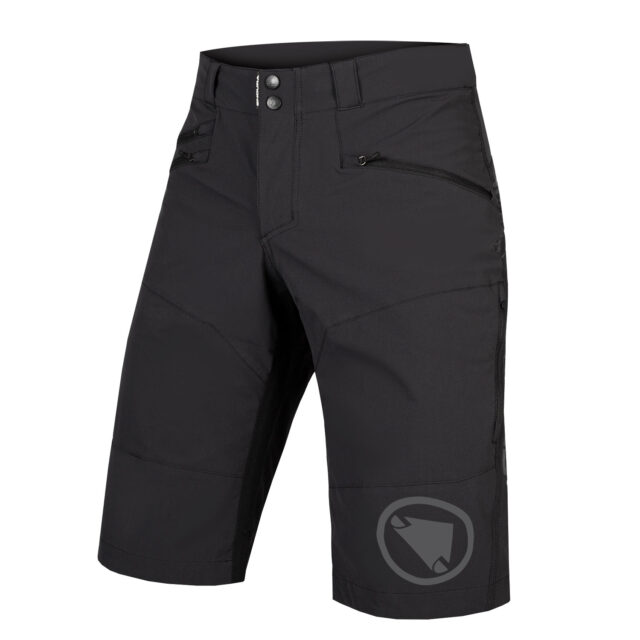
David Golay: Endura says that with the Singletrack II, they set out to make a “bulletproof baggy that looks great, performs even better, and will keep doing it trail after trail.” Now having spent a lot of time in it, I’m a big fan. There are a number of features that set the Singletrack II shorts apart — first and foremost, just how burly they are. Endura isn’t kidding with that “bulletproof” line. The lower half of the seat and back / inside of the legs (the dark portion in the stock photos) is a super stout, ripstop-nylon material that also manages to be impressively supple and comfortable for how burly it is. If you’re generally hard on shorts (especially if you’re prone to buzzing your backside on the rear tire) these are an outstanding option.
The rest of the Singletrack II shorts is a more typical softshell-type material with a moderate four-way stretch, so the shorts still breathe reasonably well, despite the extra-burly material in the seat. And to that end, the Singletrack II also features a pair of zippered vents with a mesh backer on the outside of each thigh. It’s also worth noting that, while the inseam of the Singletrack II measures somewhat shorter than some at 12.5’’ / 31.8 cm (size Medium), that’s at the very shortest point on the inside of the legs. The outside portion of the lower leg hem is significantly longer, and the front of the leg opening features extra panels that make them fall really neatly over a pair of knee pads. The coverage is excellent, and they drape especially well over pads.
The cut of the Singletrack II is perhaps very slightly on the roomer side of average, but not by a large margin. The back of the waist is cut notably high and offers excellent coverage, as well as featuring a pair of velcro tabs for waist adjustment. The Singletrack II doesn’t include a chamois liner, but does feature attachment points for Endura’s “Clickfast” system — essentially a set of snaps that attach a chamois into the baggy short. I’m not much of a chamois fan, but haven’t found those snaps to be intrusive when ridden without one in the least.
The hand pockets on the Singletrack II are both zippered and have their openings located both higher on the shorts, and more horizontal (as opposed to sloping downward towards the outside of the leg) than average, which works really well for access while on the bike — they’re easy to get into while seated and aren’t prone to having things fall out while pedalling. And finally, there’s a much smaller extra pocket above the right hand pocket, intended for key storage.
The downside of the heavier ripstop material on the back of the Singletrack II shorts is that they do absorb a bit more water than average, but most people probably won’t be riding them in wet enough conditions for it to matter. If you do want something with more water resistance, Enduro has options for you, too (check out the MT500 Spray below).
Abit MTN
Fabric: 90% nylon / 10% elastane (190 gsm)
Inseam Length: 12.0’’ / 30.5 cm and 13.5’’ / 34.3 cm options
Pockets: Two hand and two thigh pockets (all zippered)
Waist adjustment: Integrated, cam-lock belt
Reviewer: 6’, 165 lb / 183 cm, 74.8 kg
Size Tested: 32, Athletic Fit, 13.5’’ waist
MSRP: $110
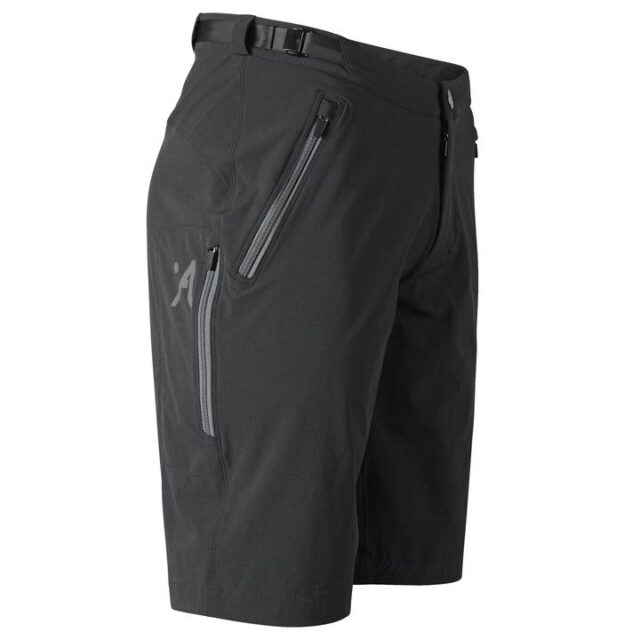
David: The Abit MTN are an updated version of their Enduro short that we tested (and really liked) in our last roundup, and while the updates are mostly subtle, they’re also definitely for the better.
One of the coolest features of the old Enduro shorts was that, in addition to being offered in a standard range of waist widths, they also came in two different fits, dubbed “Slim” and “Athletic”. The new MTN shorts keep those two fit options but add the additional option of two different inseam lengths — 12’’ and 13.5’’ — in both fits. The “Athletic” option adds 2.5’’ (6.4 cm) in circumference around the hip and leg opening in a given waist width, and is a bit on the roomier side of the spectrum. For folks looking for a more trim fit, there’s the “Slim” option. The fit of the Athletic versions isn’t terribly different between the Enduro and MTN shorts, but the silhouette of the MTN is very subtly tweaked for a slightly more contoured fit, especially through the crotch gusset.
Like the older Enduro short, the MTN uses a cam-lock waist adjustment which works well, but does require a little bit of care to get situated so that it’s not sitting underneath the strap of a hip pack. I haven’t had any significant issues getting it to work with any of a number of different packs I’ve used with the MTN shorts, but rather just need to pay more attention when putting them on.
The Enduro short had a single thigh pocket on the right leg, but the MTN adds a second one on the left leg and changes the liner of the thigh pockets to mesh, so that they also function as vents when left open. The new mesh liners in the MTN short also add a baffle to keep a phone or other similar item a bit more secure within the pocket.
Overall, the MTN isn’t dramatically different than the (already very good) Enduro short, but adds a couple of nice tweaks and offers an unusually wide range of fit options, so it’s well worth a look for riders who find the “average” fit of many shorts to not work for them for one reason or another.
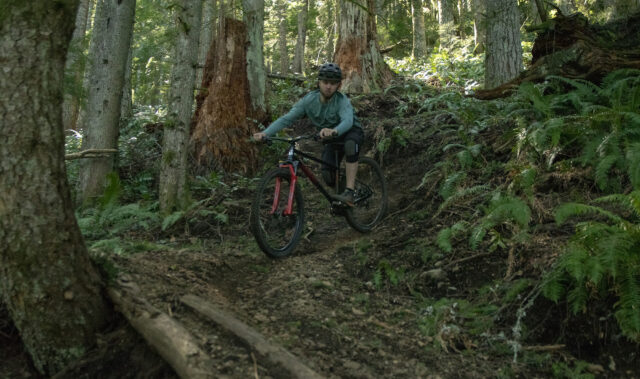
Race Face Stage
Fabric: 92% polyester / 8% nylon main fabric; secondary 92% nylon / 8% spandex panels
Inseam Length: 13’’ / 33 cm
Pockets: Two hand and two seat pockets, all zippered
Waist adjustment: Integrated, velcro-adjustable belt, plus belt loops
Reviewer: 6’, 165 lb / 183 cm, 74.8 kg
Size Tested: Medium
MSRP: $114
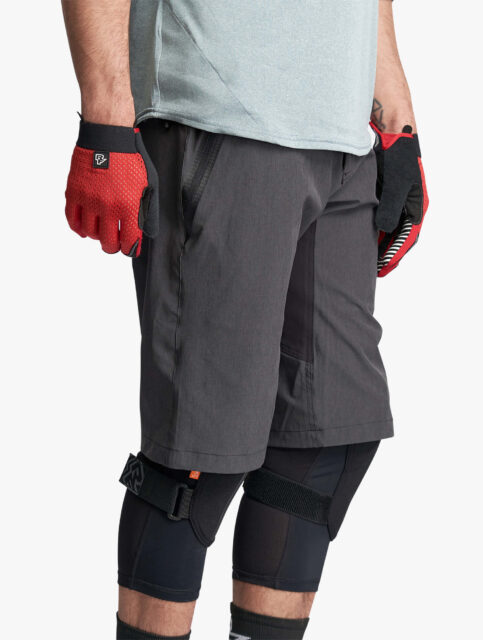
David: Race Face describes the Stage short as being a versatile option meant for all sorts of mountain bike use, and in my experience, it’s especially well suited for riders looking for a lightweight, well-ventilated short.
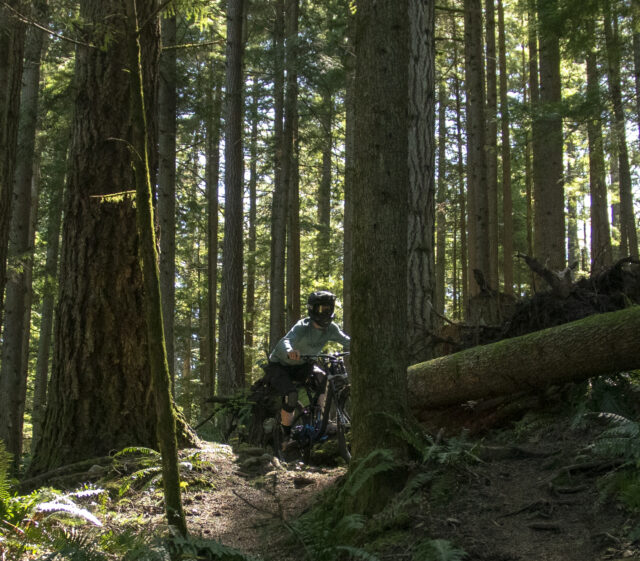
The Stage has what we’d call an MTB-specific cut, with a high back and fairly long inseam for knee pad coverage. The fit of the Stage is a touch on the slim-fitting side of average — personally, I could use a little looser fit in the upper thighs, in particular. That’s a somewhat common problem for me in bike shorts (and a big part of why I like the “Athletic Fit” option in the Abit MTN, above), and if you’re looking for a slimmer fit, the Stage should be on your radar.
The Stage is also notable for how light and breathable the fabric is — it’s one of the coolest options here. Despite that light weight, it’s held up to a fair bit of riding without issue, though we wouldn’t expect it to be as burly as the ultra-stout Endura Singletrack II, in particular.
The Stage features four zippered pockets (two hand, two seat) and a velcro-adjustable integrated belt; standard belt loops are also included. The only real issue I’ve had with the Stage has to do with the zipper pulls on the hand pockets — both fell off almost immediately. Instead of being looped all the way through the pull tabs, they were just hooked through a pair of notches on the sides of the tabs (see below) with predictable results.
Luke jokingly referred to this as “Different Looking Zipper Pull Technology” (DLZPT) with a disclaimer that DLZPT zipper pulls are single-use only. That’s not too far from the truth, and we’re not sure how that detail made it out the door without getting addressed. Without the pulls though, the zippers still work fine, and the shorts are a good option otherwise — especially for people looking for a lightweight, super-breathable option with a slightly slimmer cut than average.
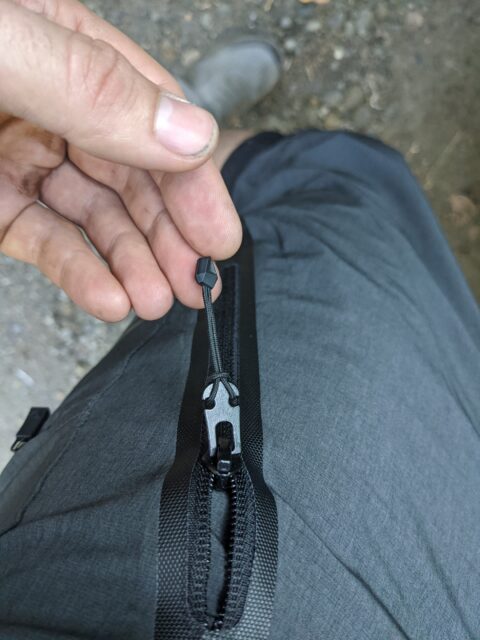
Endura MT500 Spray Short
Fabric: 100% Nylon; 4-way stretch front panels with 3-layer waterproof rear
Inseam Length: 13.5’’ / 34.3 cm
Pockets: Two hand pockets (zippered)
Waist adjustment: Integrated, velcro-adjustable belt, plus belt loops
Reviewer: 6’, 165 lb / 183 cm, 74.8 kg
Size Tested: Medium
MSRP: $120
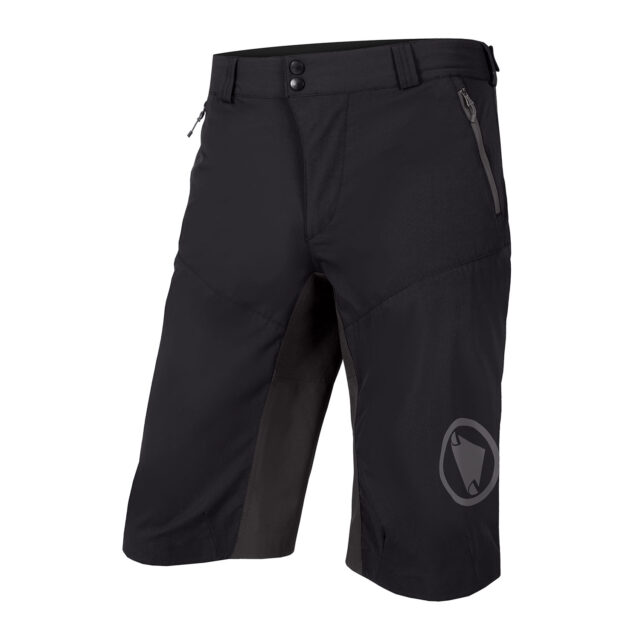
David: The fit and patterning of the MT500 Spray shorts are very similar to the Singletrack II that we talked about above, but the MT500 Spray adds a three-layer waterproof material across the back of the seat and insides of the legs. This short is intended for use when the ground is wet, but it might not be actively raining. The idea is that it’ll keep you dry from rear-wheel spray while breathing much better than a fully waterproof short, and from that perspective, they’re very appealing.
Perhaps unsurprisingly, the MT500 Spray shorts forgo the vents that are featured on the Singletrack II. The pocket layout is also different, with only two zippered hand pockets, with more traditional, vertical openings, but the high-backed waist and velcro adjustment carry over, as does the “Clickfast” system to integrate chamois liners (not included) with the shorts.
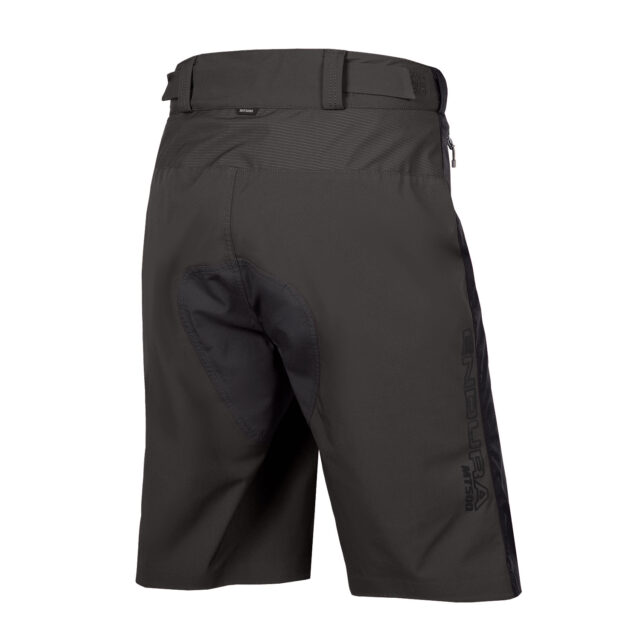
The combination of waterproof back panels with a more traditional softshell front is truly excellent when riding on wet trails — the MT500 Spray do a good job keeping you dry if it’s not raining, but the ground is wet. If it is raining, the standard front panels do feature a DWR coating but will soak through fairly quickly. For the right conditions, though, the combination is excellent. The MT500 Spray shorts do breathe far better and are more comfortable than a fully waterproof short would be, and if you’re somewhere — like Endura’s home turf of Scotland — where wet trails but clear skies are a frequent occurrence, they’re well worth a look.
The biggest limitation is that the MT500 Spray shorts really need to be worn with some sort of a liner — the stiff, rough seam down the center of the crotch gusset can chafe a bit without one. If you normally ride with one, it won’t be an issue, but fans of going without should take caution.
7mesh Revo
Fabric: GoreTex Active 3L — 70d Nylon Plain Weave / Tricot Knit Backer
Inseam Length: 15.5’’ / 39.4 cm
Pockets: Two hand pockets (drop-in)
Waist adjustment: Integrated, cam-lock belt, plus belt loops
Reviewer: 6’, 165 lb / 183 cm, 74.8 kg
Size Tested: Medium
MSRP: $225
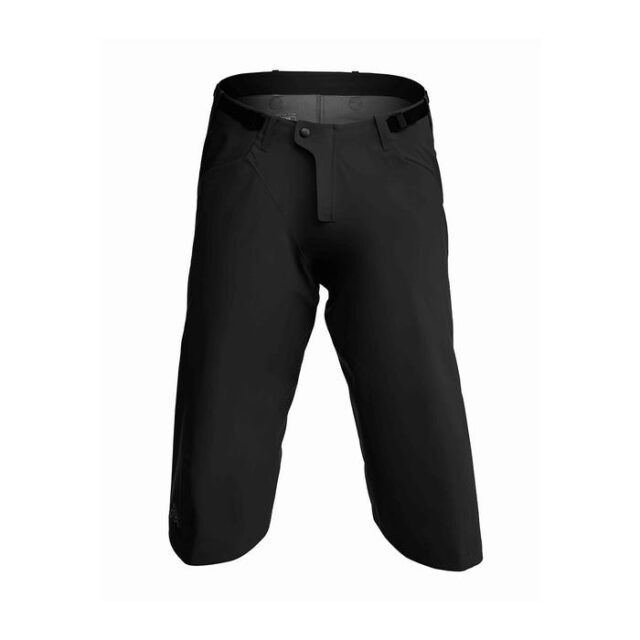
David: The Revo is 7mesh’s fully waterproof short, made of Gore-Tex Active three-layer waterproof / breathable fabric and meant for riding in truly horrendous conditions. A waterproof short might sound like a bit of an oddity — your lower legs are still going to get wet, after all. But keeping your chamois and liner dry (if applicable) and having shorts that shed water rather than absorb it truly does make riding in very wet conditions vastly more comfortable, and the Revos are by far the best waterproof short I’ve tried to date.
We’ve sung the praises of Gore-Tex Active a fair bit at Blister, and it continues to be great in the Revo shorts. For a three-layer waterproof / breathable fabric, it breathes relatively well and is more supple and softer against the skin than average. The patterning of the Revo is also excellent, especially around the crotch gusset — there’s a cleverly patterned panel there to avoid placing any seams in particularly high-wear areas, avoiding the pitfalls of the Endura MT500 Spray shorts in that regard (the Revo shorts don’t require a padded liner to be comfortable).
The Revo shorts feature a cam-lock integrated belt, with a closure on each hip. It works well, but like the (very similar) setup on the Abit MTN, it does take a little care to get the closures to not fall underneath a hip-pack strap when putting on the pack. Belt loops are included as well. My only real complaint with the Revo is that I wish they had a zippered pocket or two — they only feature a pair of standard hand pockets, without any closure.
It’s also worth noting that the cut of the Revo is super long, meant to fall below the knee. This does have the advantage of helping to keep knee pads dry to some extent, if you’re wearing them, but does also mean that I occasionally feel the back hem of the shorts brushing against my calf (below the knee pad) when pedalling. It’s not a big deal but it does feel a little odd (apparently I’m kind of ticklish there?) and is a very minor tradeoff of their long inseam.
Overall though, the Revo shorts are an outstanding option for a waterproof short to ride through the worst, wettest weather and will continue to be a key part of my winter riding kit when the season rolls back around.
Flylow Preston
Fabric: Intuitive IQ, 97% nylon, 3% spandex, 273 gsm
Inseam Length: 12.5’’ / 31.8 cm
Pockets: Two hand pockets (drop-in); one thigh pocket (zippered)
Waist adjustment: Belt loops
Reviewer: 6’, 165 lb / 183 cm, 74.8 kg
Size Tested: Medium
MSRP: $80
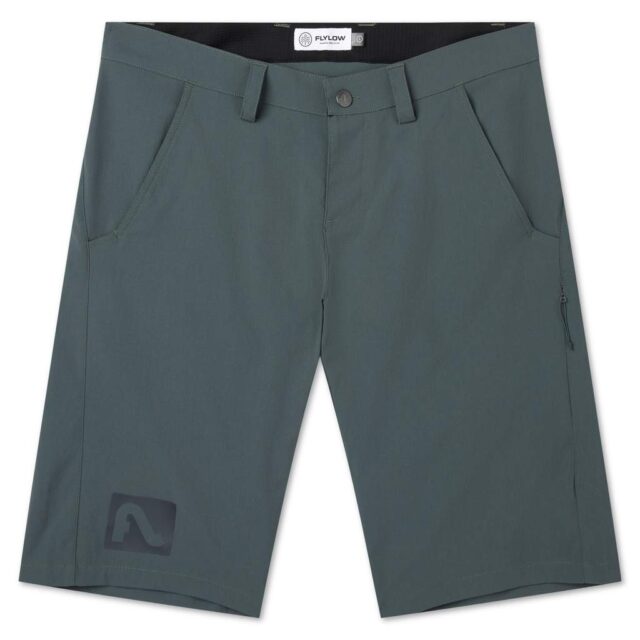
David: Flylow says the Preston short was “purpose built for the mountain bike saddle” but that it “rolls through town just fine too.” We’d call them more of a 50/50 short that feels designed to be a true middle ground. Compared to more MTB-specific cuts, the Preston sits lower across the back and (depending on your leg length) is borderline on the short side for knee-pad coverage. Conversely, though, they’re much more comfortable and look way better for casual, everyday use than most mountain bike shorts.
I’ve happily worn the Preston both on and off the bike, and they’re a good, versatile option for both — especially if you prefer a more low-key, less bike-specific aesthetic. Most of my mountain bike rides involve me wearing knee pads, and I’ve mostly preferred the Preston for on-bike use when I’m either on a mellower mountain bike ride where I’m forgoing pads, or for more casual riding around town, running errands, and so on. I’ve also just worn the Preston as an everyday option a whole lot, and they’re one of (maybe the) best option in this guide for that use — they’re super light and comfortable, and are patterned to look like a “normal” short. These don’t scream “bike short” in the slightest.
The fabric of the Preston is quite light and breathable, but not quite as ultra-soft as some of the other shorts here (notably the 686 x Evil Everywhere Blackout, below). The Preston is still very comfortable against the skin, though, and has become a favorite of mine — especially for ultra-hot weather where that excellent breathability is critical.
My only minor complaint is that the velcro fly closure on the Preston could be a bit more robust (it’s only a ~15 mm square, rather than covering most or all of the opening). But overall, they’re a good looking, comfortable short that works well both on and off the bike.
686 x Evil Everywhere Blackout Short
Fabric: 92% polyester / 8% spandex
Inseam Length (size M): 13.25’’ / 33.7 cm
Pockets: 2 hand (drop-in, with a zippered key pocket on the right side), 2 seat (drop-in, each with a smaller interior divider), 2 thigh (zippered)
Waist Adjustment: Drawstring
Reviewer: 6’, 165 lb / 183 cm, 74.8 kg
Size Tested: 34
MSRP: $99.95
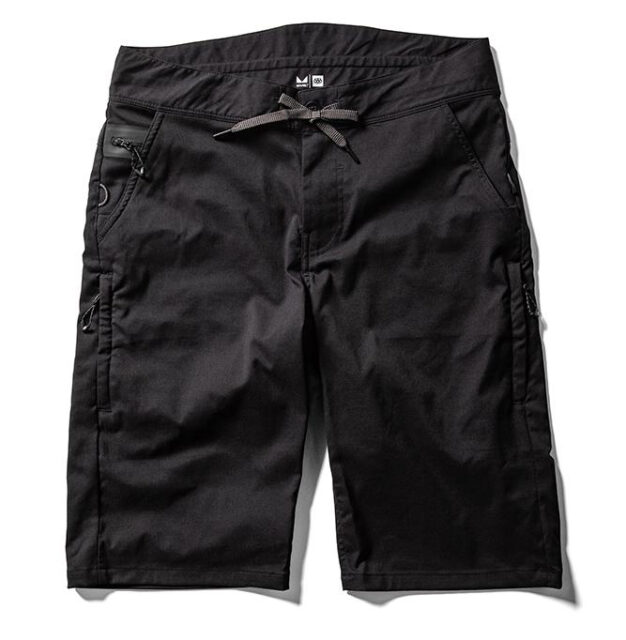
David: 686 is better known for making snowsports apparel, but in collaboration with Evil Bikes, they’ve launched a line of mountain bike apparel, including the Everywhere Blackout short. Like the Flylow Preston, it’s a bit of a hybrid between a bike-specific baggy short and a casual everyday option. The cut of the Everywhere Blackout is a bit higher across the back than most casual shorts, but the pocket arrangement and straight leg are a bit more in line with what you’d expect from a casual option. They’re also minimally branded, so as to not scream “THESE ARE BIKE SHORTS” and feature a fabric that’s a little heavier and warmer than most bike-specific baggies (and it comes with a DWR coating).
Compared to the Flylow Preston, the Everywhere Blackout features a longer inseam and therefore works better with knee pads, and it’s also much more fully featured, with more pockets and so on. The Everywhere Blackout features two fairly standard hand pockets and two more on the seat. While neither has any closure, there’s also a zippered key pocket above the right hand pocket, and both hand pockets include a loop to clip a carabiner to.
The fabric in the Everywhere Blackout is very soft and features a bit of four-way stretch. It doesn’t breathe quite as well as some of the other, lighter options here but is super comfortable against the skin. The drawstring closure isn’t quite as refined as some of the other, more elaborate waist-adjustment options out there, but it works well enough and has two sets of holes at the waist opening so that the strings can be routed to the inside or outside of the short. The thigh pockets do improve the ventilation appreciably if left open, or work well to hold a phone or other similarly thin, flat item without too much bouncing.
The seat pockets have some extra tricks in store, too — both include a smaller inner pocket / sleeve, the left of which is labeled as being RFID blocking. And finally, there is also a zippered pocket on the back of each thigh. The liners of those thigh pockets are mesh, so that they also serve as vents if left open.
It is worth noting that the Everywhere Blackout runs really small — I’d normally wear a 31 or 32 short, but wear a 34 in these and they fit well. We’d definitely recommend that most people size up in these. I’d call the fit of the 34 about middle-of-the-road for a Medium / 32 — the waist, in particular, is definitely not a 34. If you’re after a short that works well on the bike, looks good off it, and has a longer inseam / more knee-pad coverage than the Flylow Preston, the 686 Everything Blackout is well worth a look. Just keep in mind that they’re a little warmer than most of the more bike-specific options here.
There’s also a pant version of the Everywhere Blackout available that is extremely similar, apart from the obvious change in leg length. It’s been way too hot around here for me to have spent much time in the pant version yet, but I’ll be weighing in on those too if and when things finally cool off.
Pit Viper High Speed Off Road MTB Short
Fabric: 92% nylon / 8% spandex (175 gsm)
Inseam Length (size M): 12.75’’ / 32.4 cm
Pockets: 2 hand, 1 thigh (all zippered)
Waist Adjustment: two “hook + loop” adjusters
Reviewer: 5’8”, 155 lbs / 173 cm, 70 kg
Size Tested: Medium
MSRP: $123.75
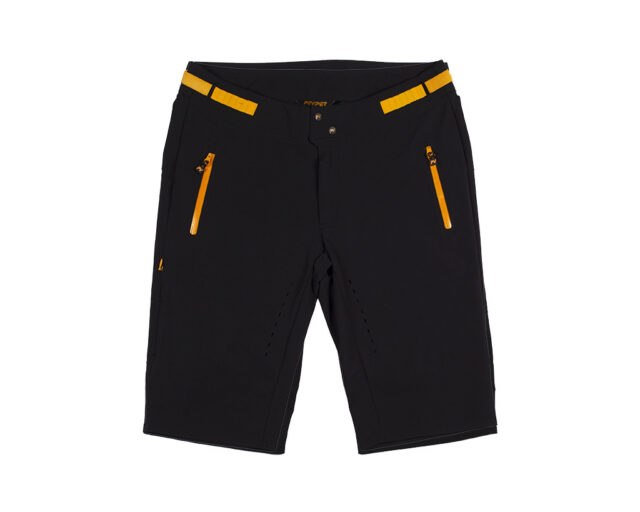
Luke Koppa: Pit Viper is known by many as the rambunctious sunglasses company with a “unique” brand image. But this year, they launched their first line of technical apparel, under their new “LXIX Exclusive” label (you can probably guess what those roman numerals stand for…).
Now, like most people probably were, I was skeptical when I first heard this news — and especially when I noticed Pit Viper was going for the higher-end category in terms of pricing.
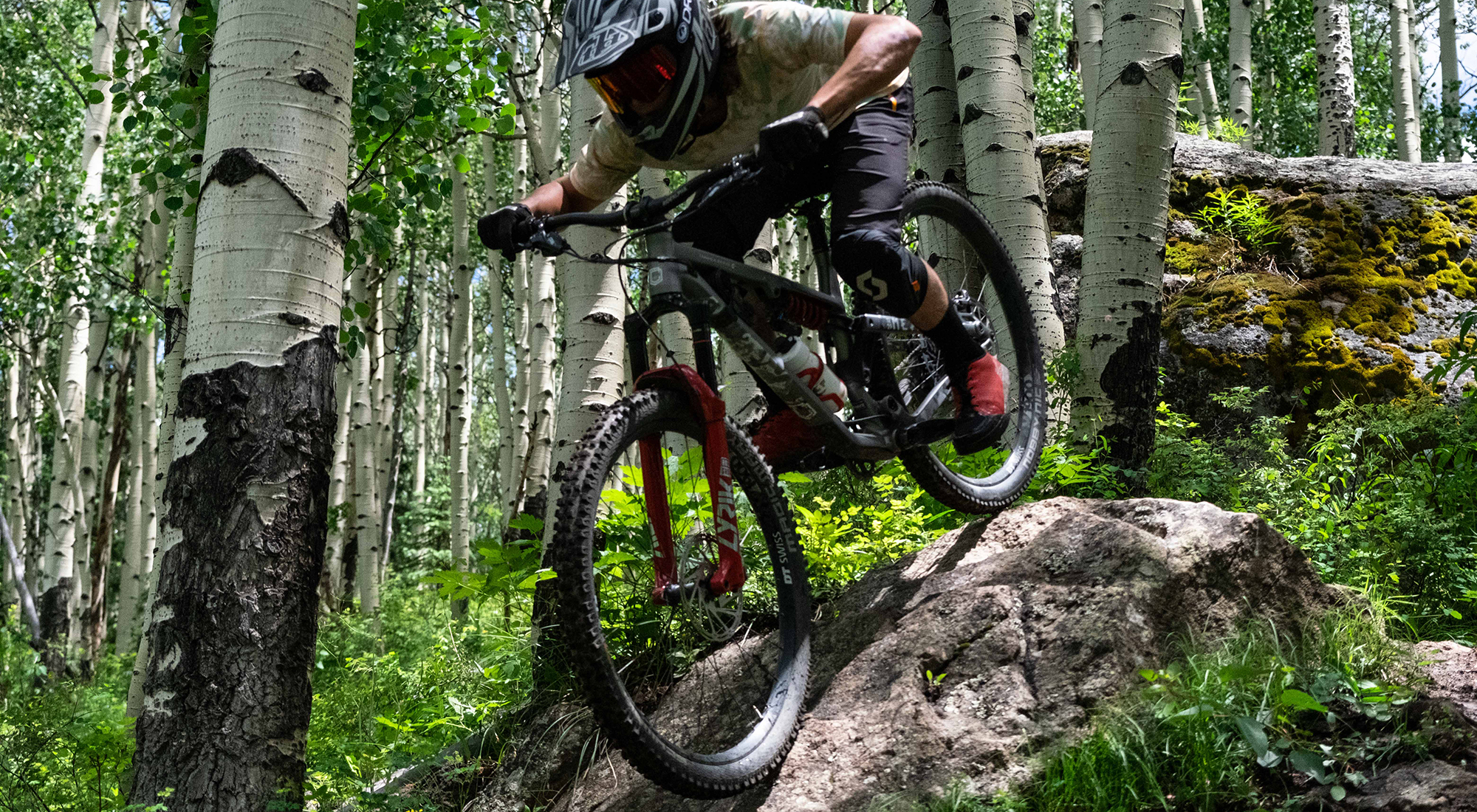
That said, I became a lot less skeptical and a lot more interested when I found out that Pit Viper had hired a former employee of Strafe Outerwear to head up the design of their apparel. I’ve been very impressed by a lot of Strafe pieces over the years, so I knew there was potential for Pit Viper’s High Speed Off Road (HSOR) collection to be more than just different-looking.
I now have a lot of rides in a few pieces from the HSOR line, and I’ve been impressed across the board.
Their MTB Short stands out for a few reasons. First, it’s got what I think is probably the best integrated waist-adjustment system I’ve used. And probably not by coincidence, it’s very similar to the one on some of Strafe’s ski / snowboard pants. It consists of an actual hook and loop (not Velcro), with an aluminum hook you can slot into various sewn-in slots of webbing. It’s super low profile, I can’t see how it’d accidentally become undone, and it actually holds tension without feeling restrictive (the “belt” part is slightly elastic). It’s combined with zippered fly, two snaps, and some extra velcro to make sure the waist doesn’t blow out.
This short is also notably slimmer than a lot of the other outer shorts here. I wouldn’t really call this one baggy at all, really. The size Medium fits me pretty snug through the thigh, and then it flares a bit at the knee so I can get it over my Scott Soldier 2 knee guards. As you can see above, these shorts don’t hang over knee pads very much, but I also haven’t noticed them bunching or pulling on pads, either. The waist fits pretty true to size, but those who like a very baggy fit should look elsewhere. On the other hand, if you do like a slimmer fit but don’t like how most slimmer shorts look, the HSOR MTB Short warrants a close look. It’s also worth noting that this short is unisex, with a very large available size range and several models on the product page showing how various sizes fit various body types.
Despite that fit, range of motion has never been an issue for me in these shorts. The thin softshell fabric is extremely stretchy and the shorts’ patterning is cut nicely for on-bike comfort (they feel more snug standing up than when on the bike). This short also features some laser-cut holes at the inner thigh and back of the knee, which, in concert with the thin and breathable fabric, make these shorts one of my go-to picks for hot rides.
For pockets, the HSOR MTB Short has three: two zippered hand pockets and another zippered one on the right thigh. Due to the slim fit through the thighs, there’s been no bouncing when using any of them, though I usually toss my phone or similarly bulky items in the thigh pocket since it’s not as pressed up against my leg.
All in all, the Pit Viper High Speed Off Road MTB Short stacks up very well against similarly expensive alternatives from more established brands. Particularly if you’re looking for a slimmer-fitting outer short that’s very breathable, it’s worth a closer look.
Foehn Tobin Schoeller Mountain Bike Short
Fabric: Schoeller Dryskin double weave (97% nylon / 3% spandex; 176 gsm)
Inseam Length: 13’’ / 33 cm
Pockets: 1 thigh, 1 lumbar (both zippered)
Waist Adjustment: integrated belt
Reviewer: 5’8”, 155 lbs / 173 cm, 70 kg
Size Tested: 32
MSRP: $169.95
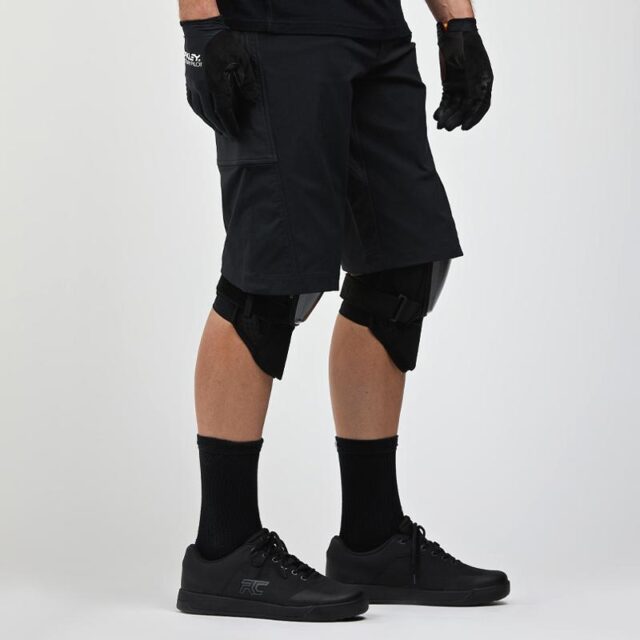
Luke: Foehn first broke into the apparel scene with their Brise Pant, which was designed to look nice while also working well for climbing and other outdoor activities. I’ve been wearing the Brise Pant for several years now and am a big fan — it had actually been my go-to biking pant for a while, due to its tapered fit and versatile fabric.
Given that, I got very excited when I heard Foehn was making mountain bike apparel. I knew the folks there had good attention to detail, and their Tobin Schoeller Mountain Bike short has not disappointed whatsoever.
This is another short that is undeniably expensive — it’s nearly double the price of some of the other shorts here. But if I had to guess, I think a large part of that comes down to the fact that Foehn opted for a high-end, brand-name fabric. In this case, it’s Schoeller Dryskin — an extremely versatile softshell fabric I’ve grown to love in ski-touring apparel. Turns out, it also works really well in bike shorts.
Despite not actually being very heavy (176 gsm), the Schoeller Dryskin fabric on the Tobin short feels very substantial — it’s notably thicker than the fabric on the Pit Viper MTB Short, and on the thicker end of most mountain bike shorts I’ve used. Despite this, I’ve done a lot of pedalling in the Tobin shorts and I’ve been very surprised by how well the fabric breathes. I’d probably opt for something a bit lighter if temps got above about 85°F / 29°C, but I’ve been perfectly happy pedalling in the Tobin on 80°F / 26.7°C days.
That said, one of the upsides of the Tobin seems to be durability. I took my first hard crash of the year in these shorts and, unlike my skin, they showed no signs of wear afterward. While durability is always difficult to judge objectively, I know I’ve put holes in other shorts during much less violent crashes, so I’m very optimistic about how the Tobin will hold up over time.
For storage, the Tobin has two zippered pockets — one at the right thigh, and one directly on the center of the back waist. Both fit my phone (iPhone 12, w/ case), and both keep whatever is inside snug and bounce-free.
I have Foehn’s Brise Pant in a size 32 and the size 32 Tobin Short fits very similarly through the waist. I’d say both pieces fit a bit on the wider end of the spectrum at the waist; I could probably get away with a 30 in both. The Tobin features an integrated belt with a traditional webbing adjustment that works pretty well, but like most similar belts, it represents my only potential area for improvement with this short. The Tobin’s belt holds tension pretty well, but when I’m using my hip pack (loaded with a camera + 2 lenses), I notice that it tends to loosen a bit over the course of a ride. All that is to say, consider downsizing if you’re between sizes. (I also found that doubling back the webbing on the Tobin’s buckle helps a bit in terms of holding tension.)
All in all, the Tobin Short is an extremely well-made short with a fabric that offers a really appealing combo of breathability and durability. It’s certainly not cheap and those seeking a slim fit should look elsewhere. But if you’re looking for a baggier short that truly can be comfortable on long trail rides and frequent days in a bike park, I personally haven’t used anything better.
Fox Ranger Short
Fabric: Stretch ripstop (57% nylon / 38% polyester / 5% spandex)
Inseam Length: 12’’ / 30.5 cm
Pockets: 2 hand (drop-in), 1 thigh (zippered)
Waist Adjustment: two belt sliders
Reviewer: 5’8”, 155 lbs / 173 cm, 70 kg
Size Tested: 32
MSRP: $89.95
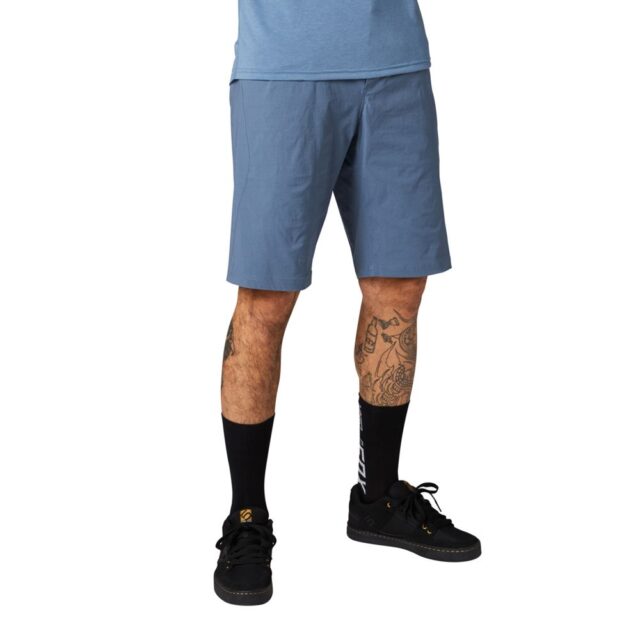
Luke: The Ranger collection is Fox’s take on the “town-to-trail” concept — the pieces are supposed to perform well on a bike, but also look pretty normal and be comfortable off the bike, too.
The standard Ranger Short (there’s also a “Lite” version) looks like a pretty typical, casual short, but it’s also a versatile bike short. It’s a bit shorter than the Pit Viper HSOR MTB Short and notably shorter than the Foehn Tobin, with the size 32 Ranger hitting me just above the knee. It fits pretty true to size through the waist and tapers subtly to the knee, pairing well with most knee pads (which, of course, I forgot to wear when we went to get photos in the Ranger…).
The Ranger’s fabric is a stretchy ripstop material that slots between the Pit Viper and Foehn shorts in terms of heft, thickness, and breathability. The Ranger gives you three pockets — two drop-in hand pockets and one zippered one that sits under the left hand pocket. I did notice a bit more bouncing when I had my phone in the Ranger’s pockets than with the Pit Viper and Foehn shorts, though it was far from super annoying.
At $90, I think the Ranger Short is a very good deal — especially when you factor in the fact that the Ranger comes with a chamois. The included chamois is a pretty middle-of-the-road option, with what I’d call a “medium-dense” pad and a very breathable fabric. I don’t usually run a chamois, but the Ranger’s has been nice on longer rides.
The Ranger’s waist-adjustment system consists of two sliders and a very thin webbing. It’s pretty difficult to adjust on the fly and I have noticed that it’ll lose tension a bit over time (I think due to the slippery webbing). That said, if I get the tension set before I put on the Ranger, it seems to hold well enough over the course of a ride for me to not need to mess with it until the next one.
In sum, the Fox Ranger Shorts are a nice, casual-looking pair of shorts with a versatile fabric and middle-of-the-road fit. Combined with their moderate price point and included chamois, I think they’re a great option if you’re not really sure what specific kind of mountain bike short you want, and / or you want something that can do double-duty as an everyday short without screaming “HEY! HEY EVERYONE! I’M A MOUNTAIN BIKER! DID YOU KNOW I MOUNTAIN BIKE? WELL NOW YOU DO!”
(And if you like the sound of all that but want a version that covers the bottom part of your legs, I highly recommend the Fox Ranger Pant. I’m a big fan.)
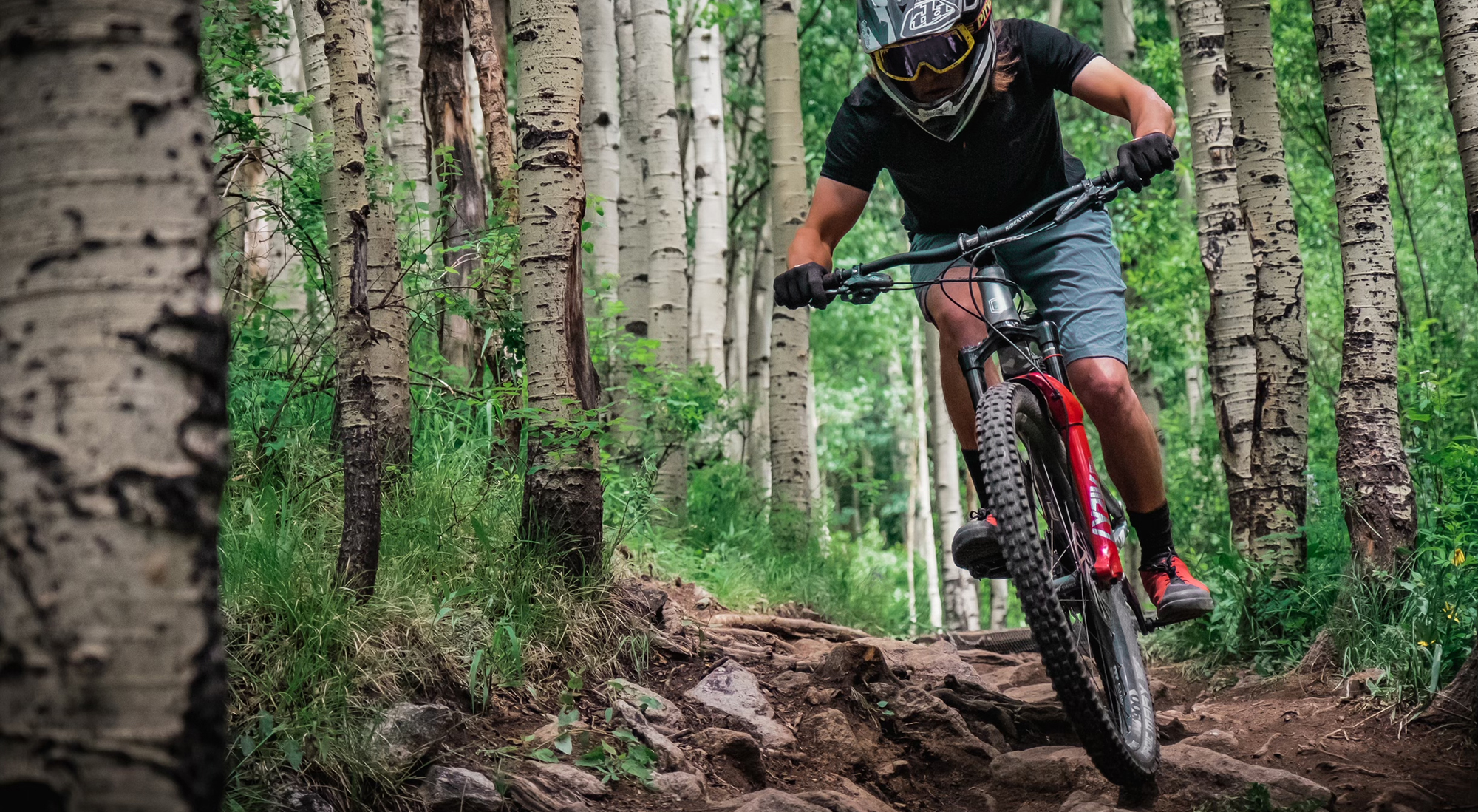

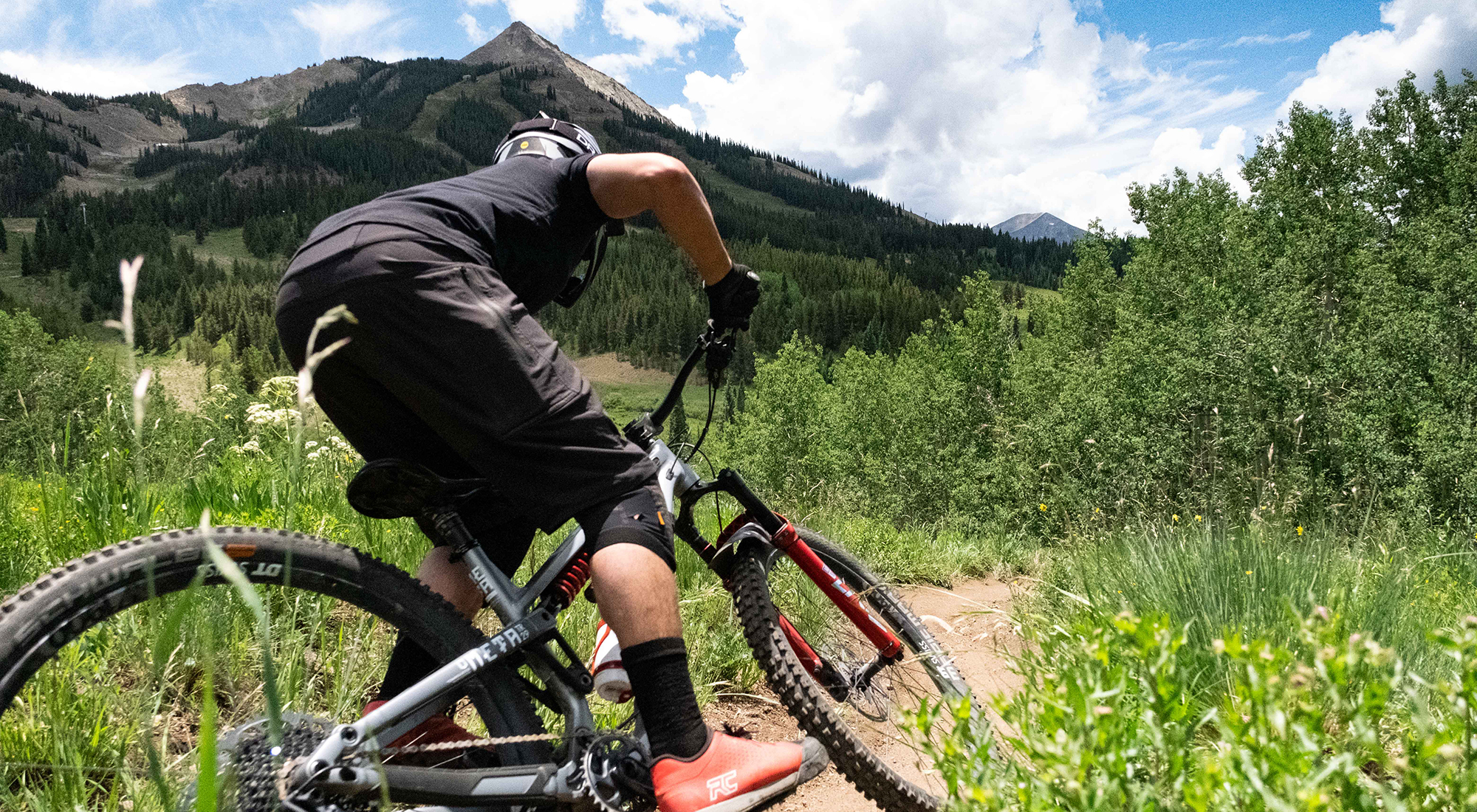
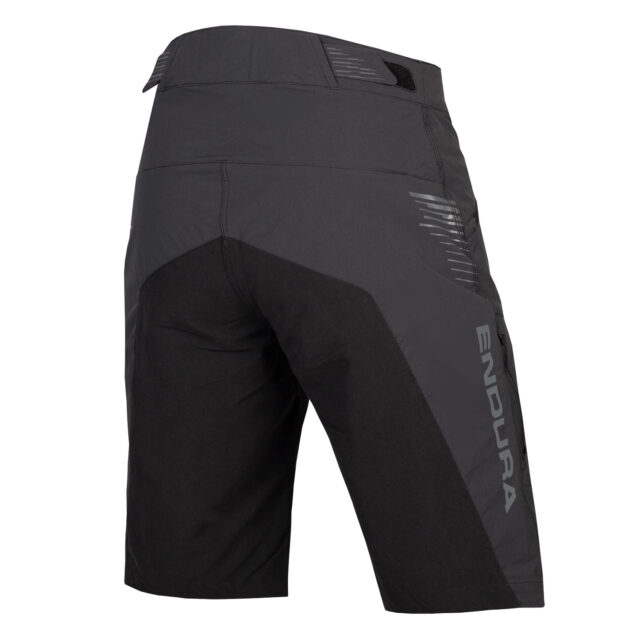
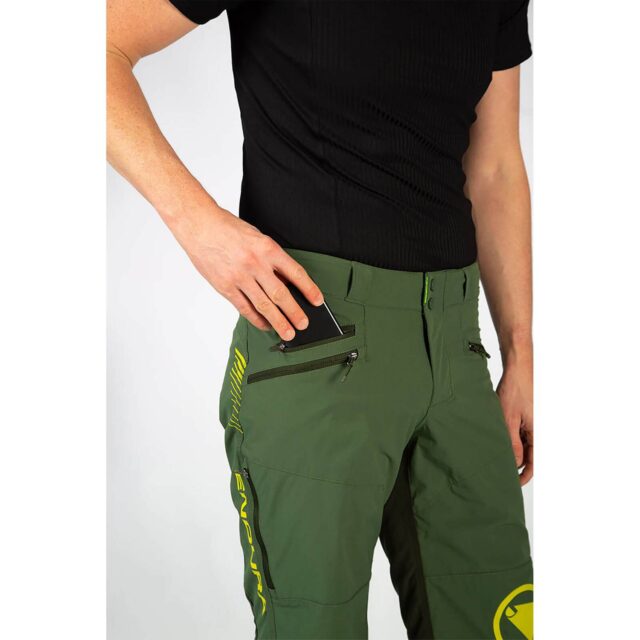
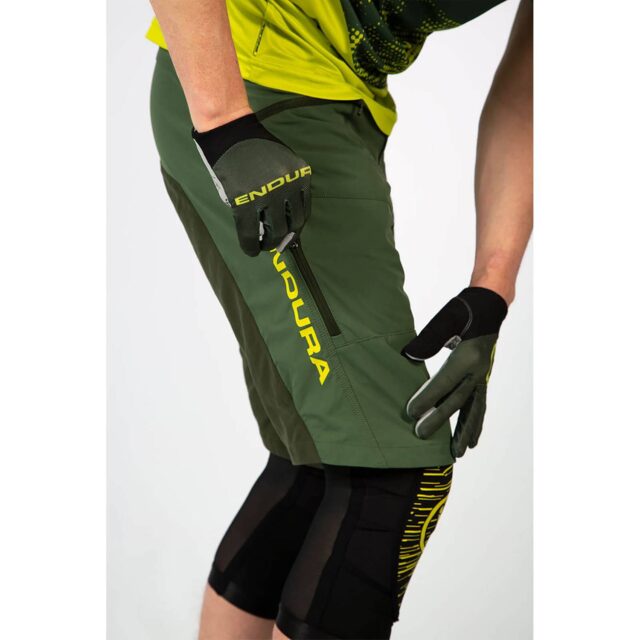
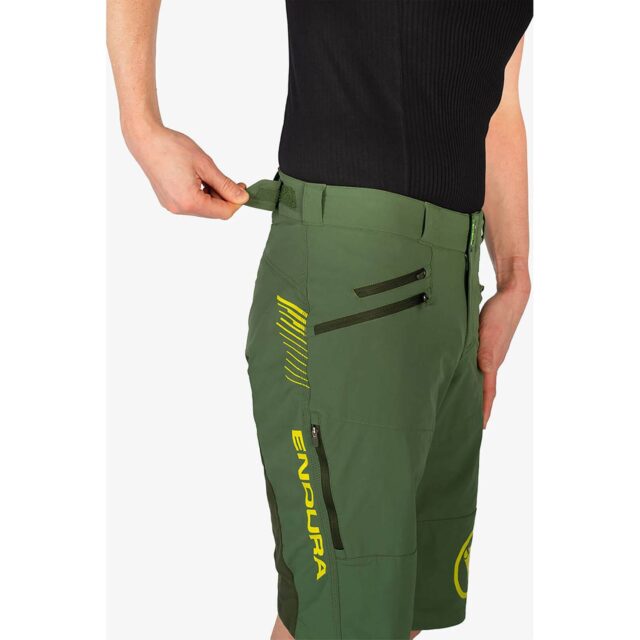
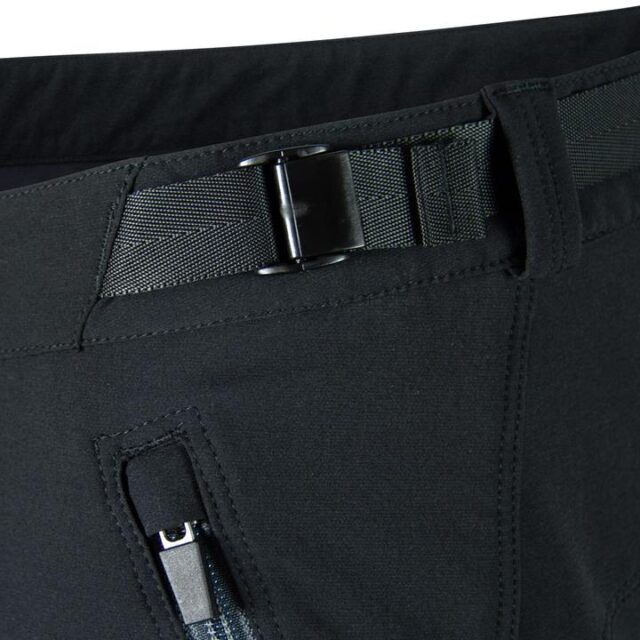
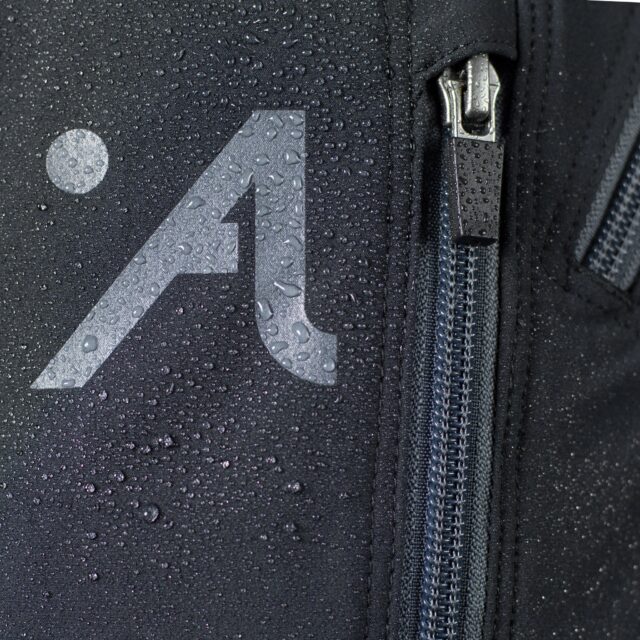
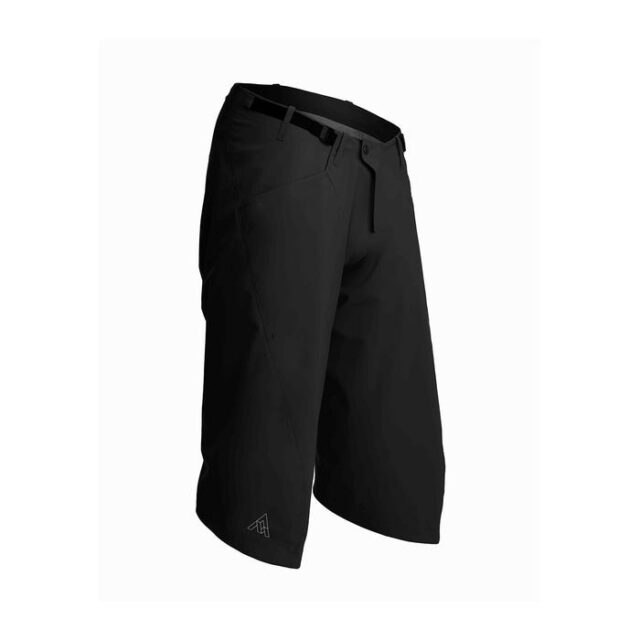
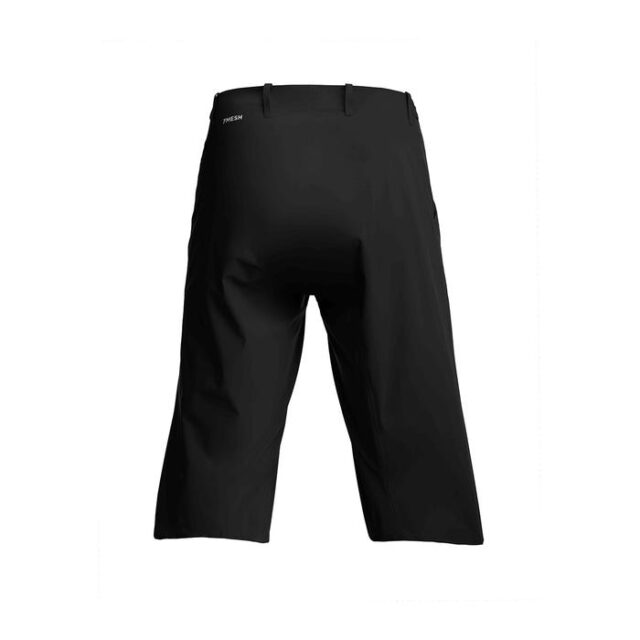
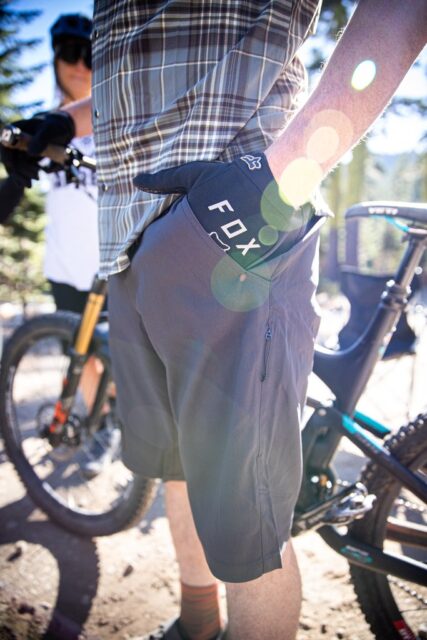
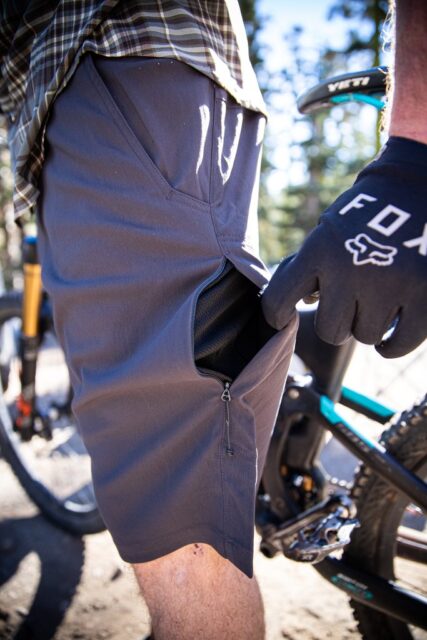
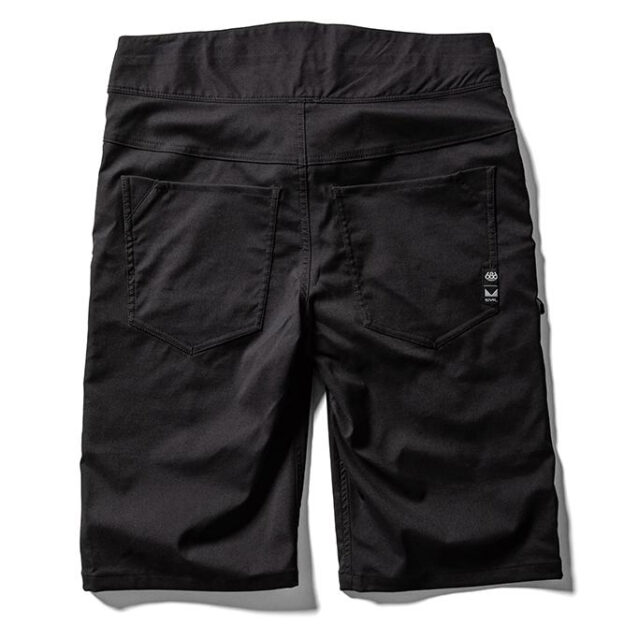
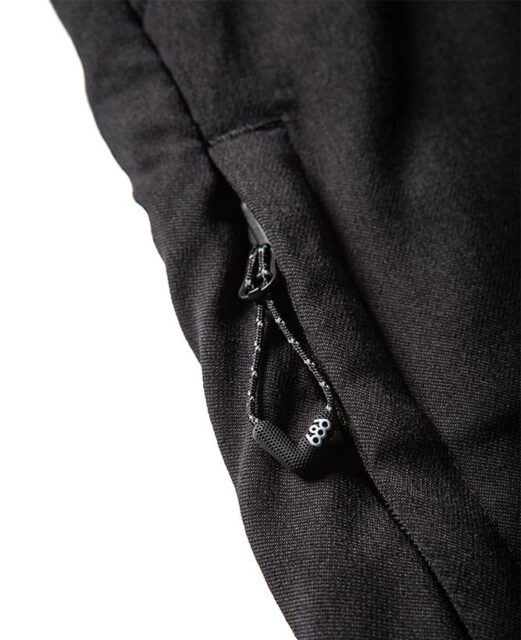
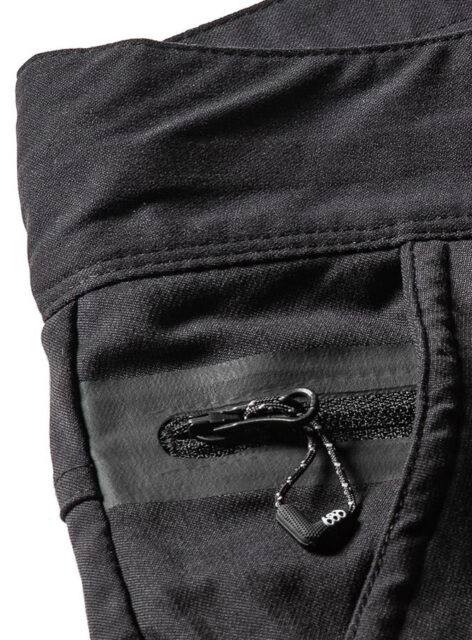
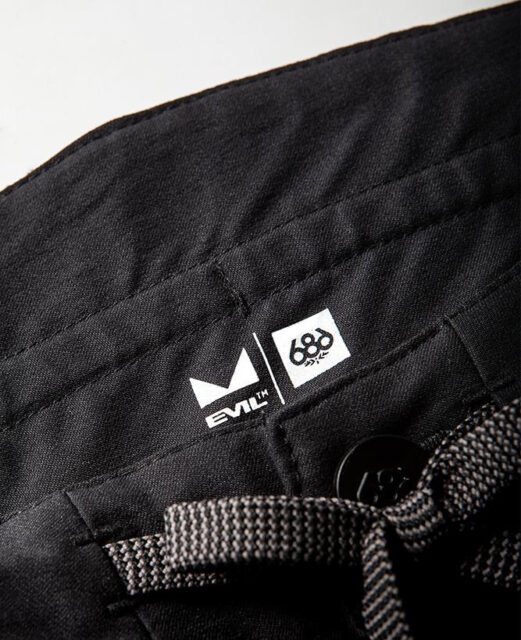
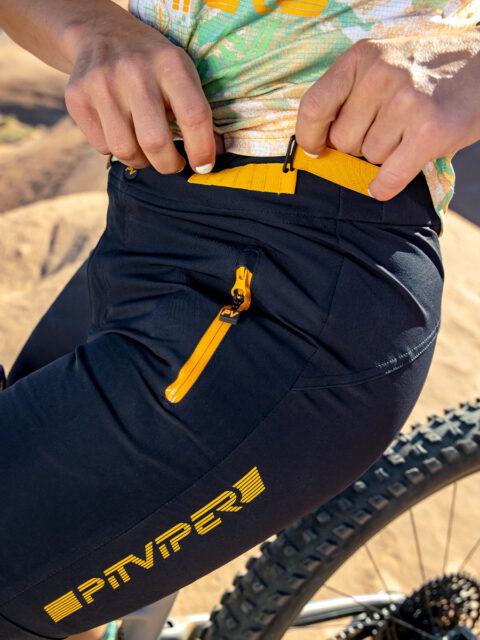
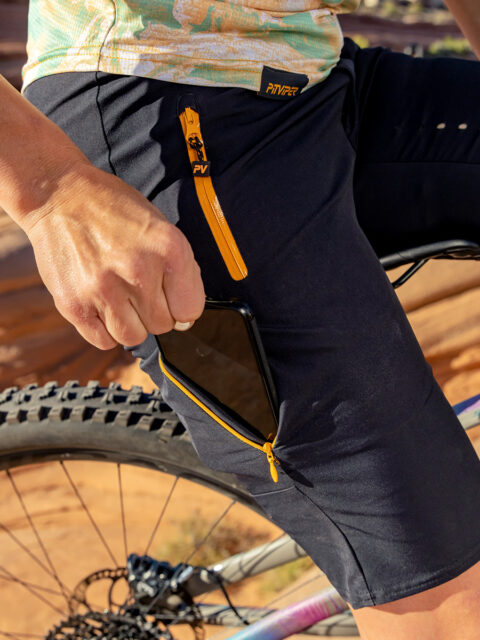
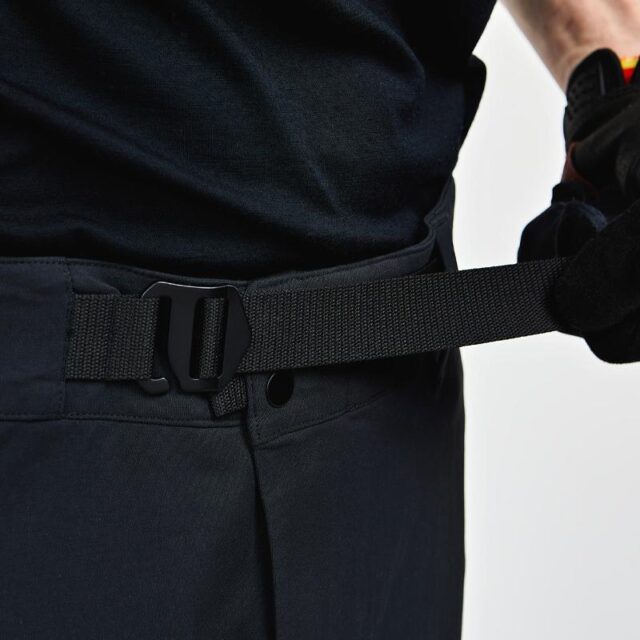
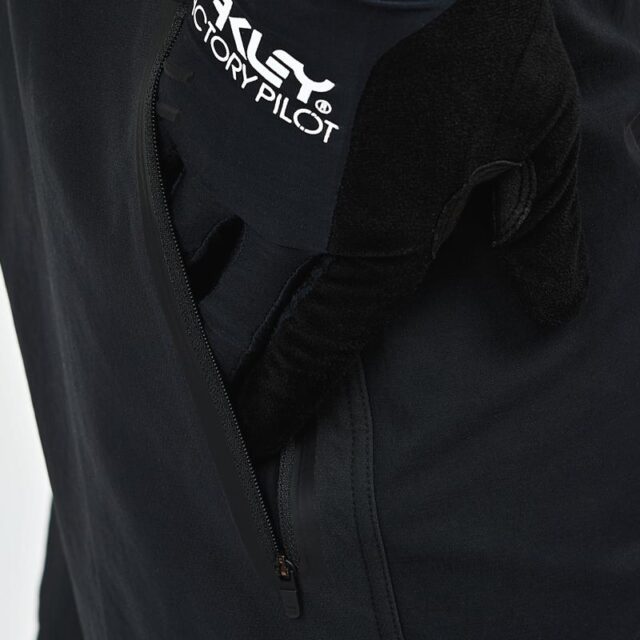
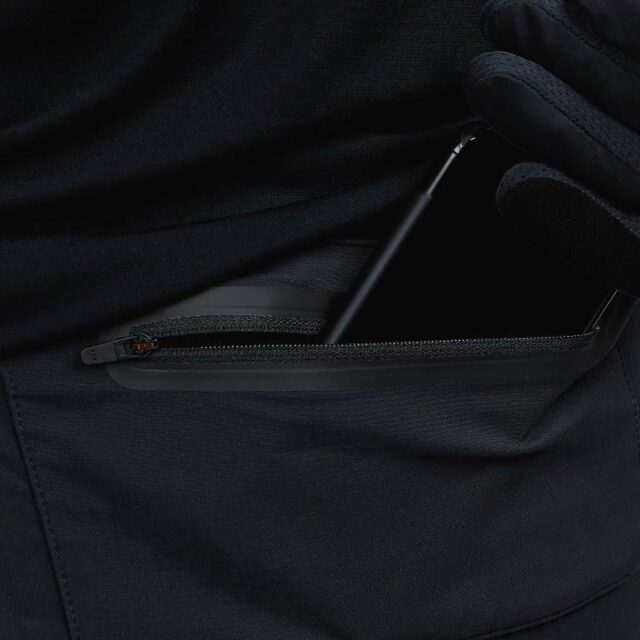
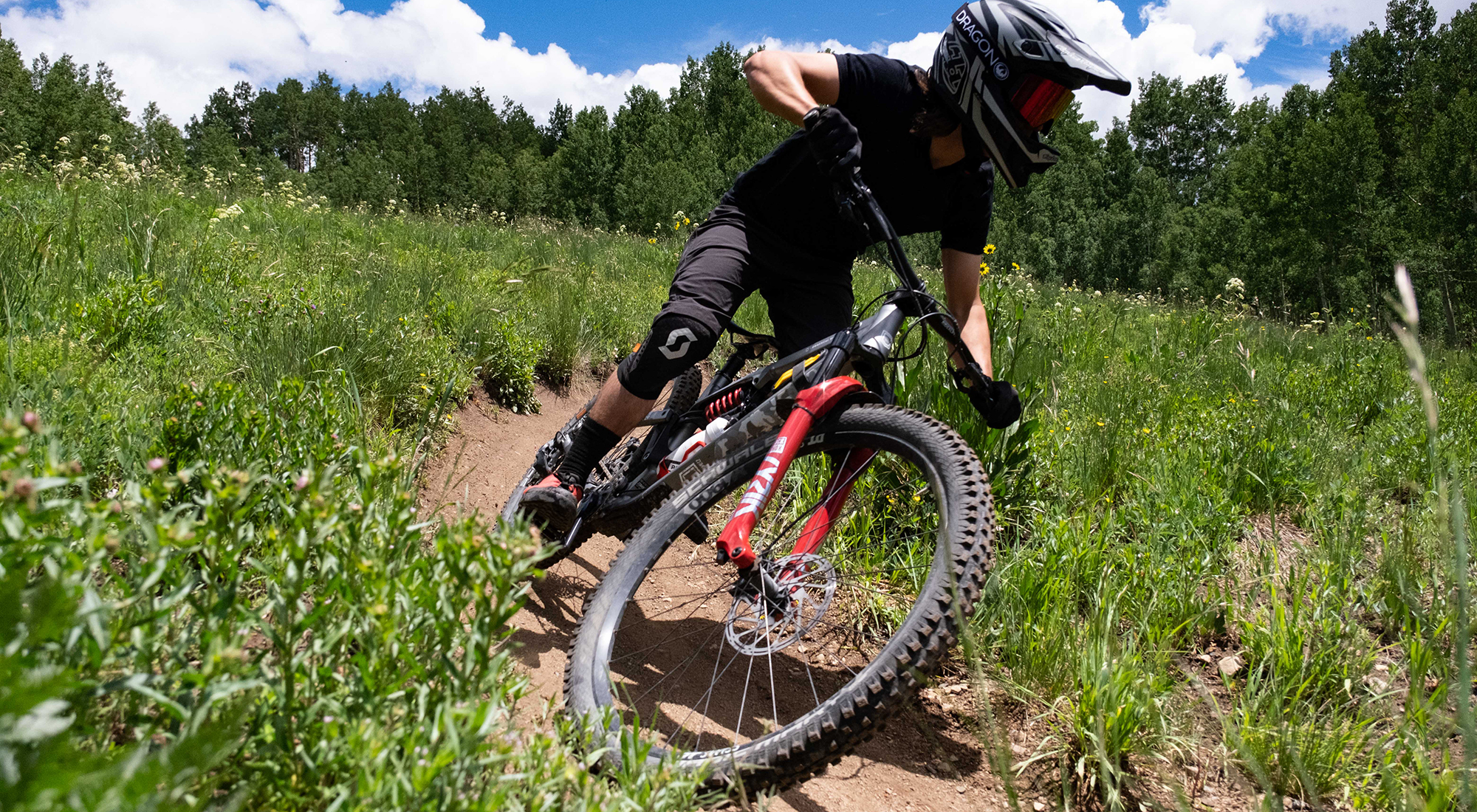
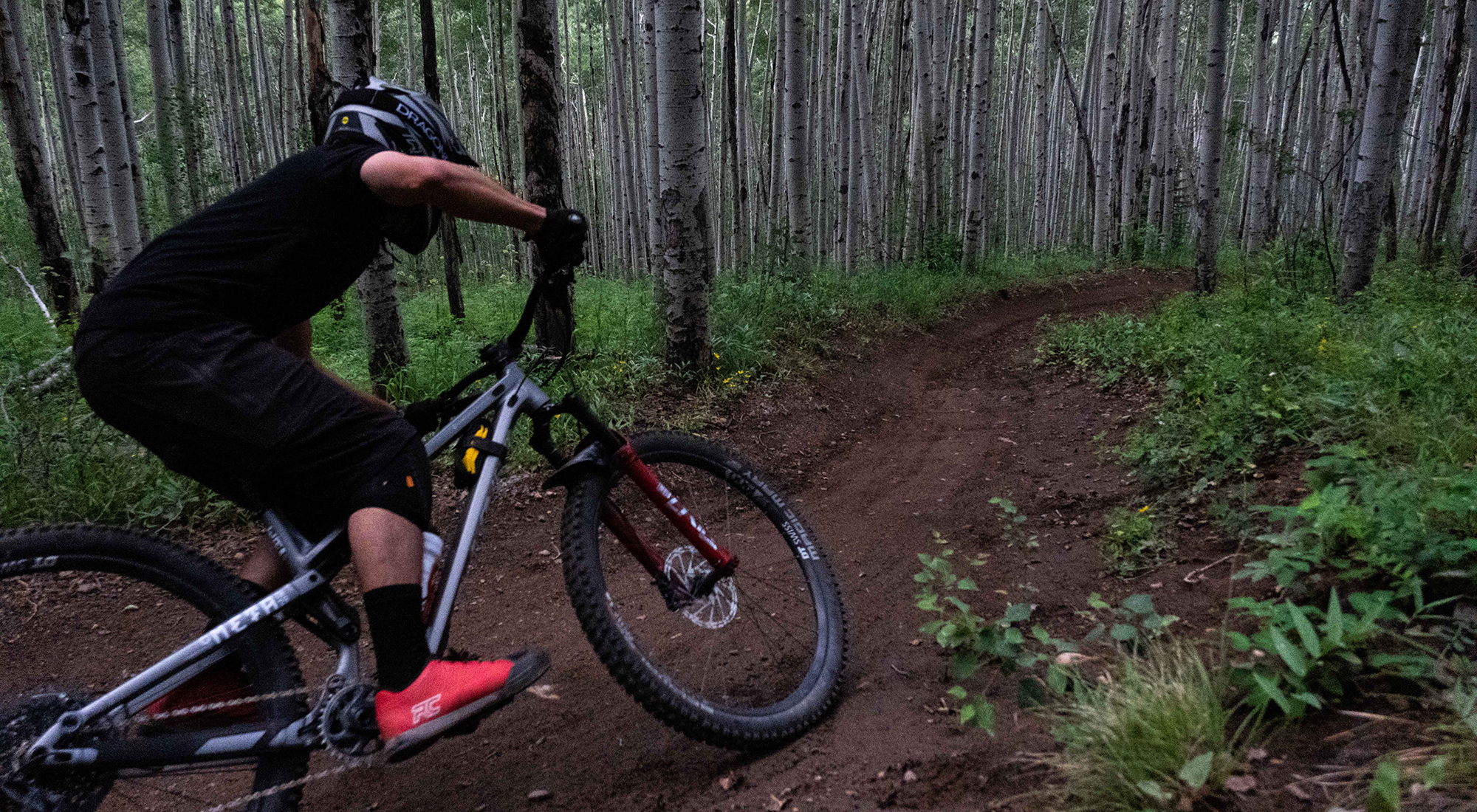
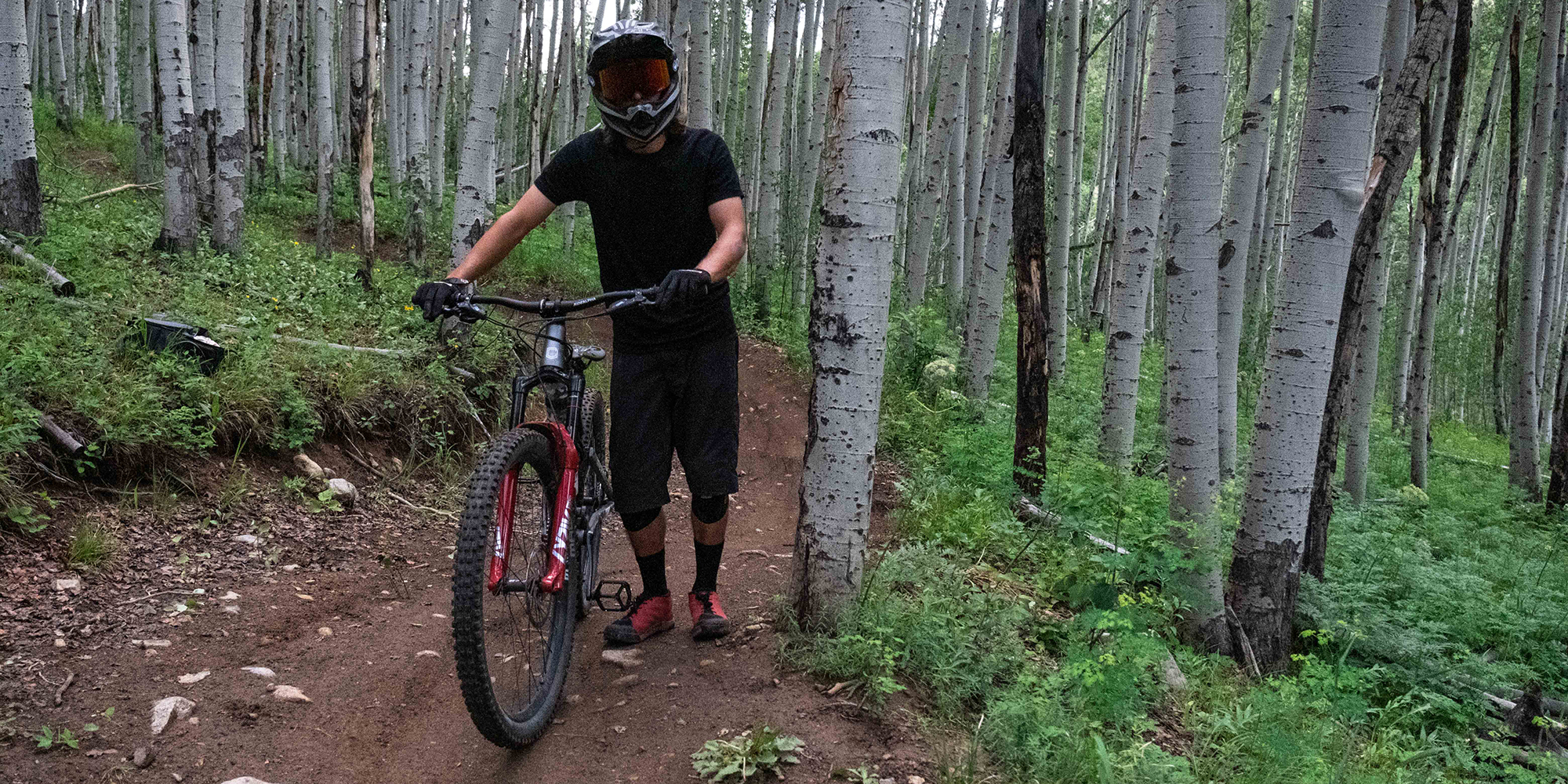
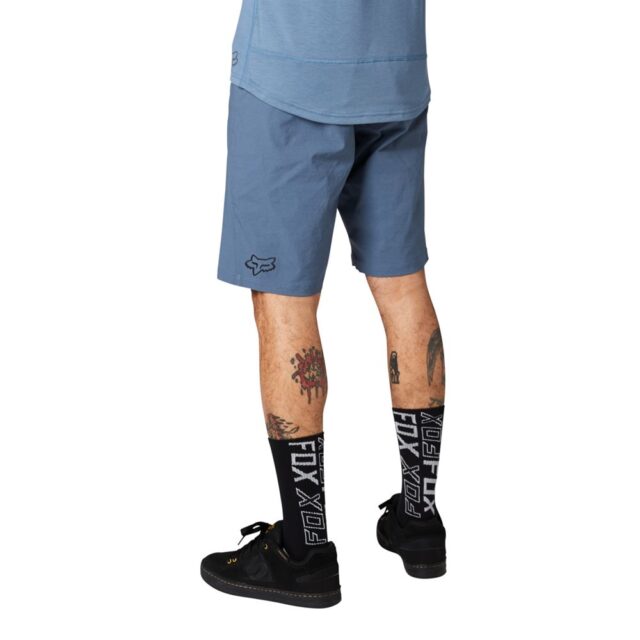
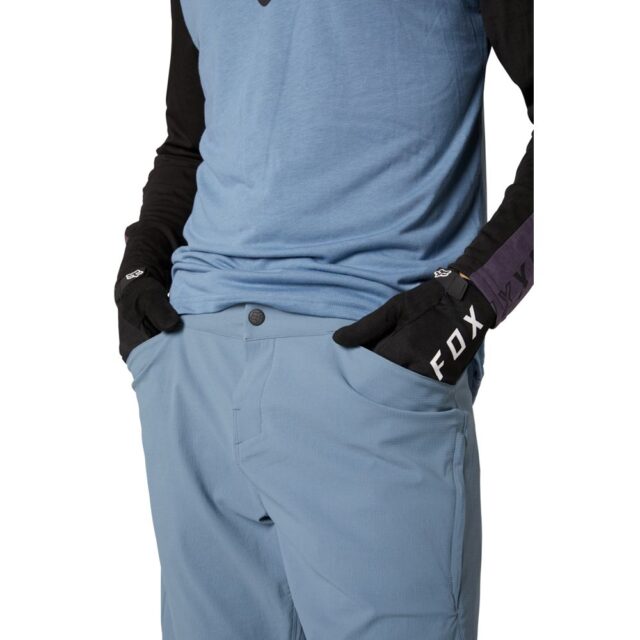
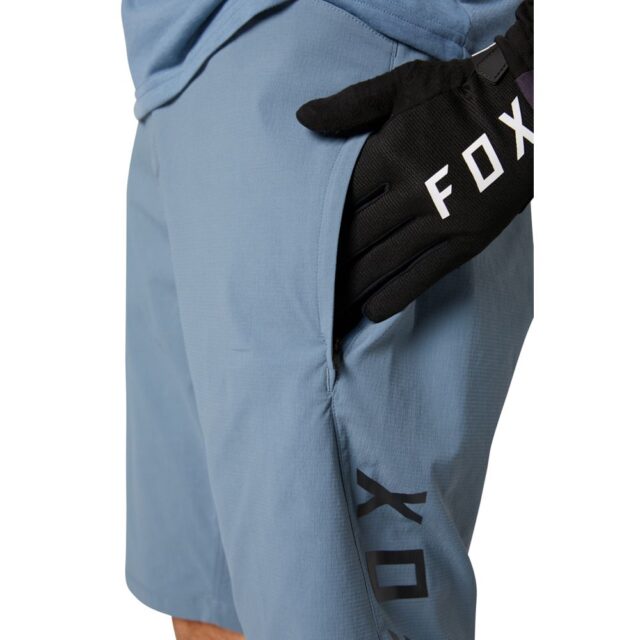
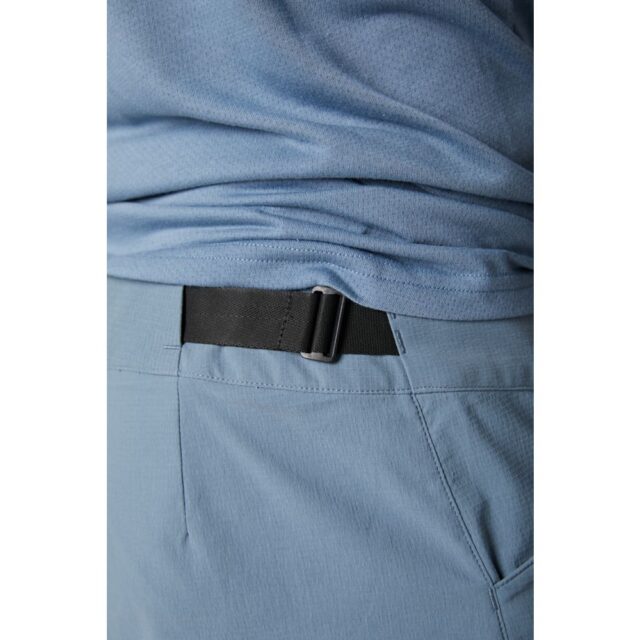
Handup A.T. Short. $42 (no chamois). Best deal out there and awesome short.
Hi Blister, any chance of reviewing shorts suited for those who do not live in the PNW or CO? For riders in hot climates (e.g. the southern half of the US, the desert west, and CA) the heavy fabrics with poor breathability featured in most of what you’ve reviewed here are of zero use 6-9mos months a year. After moving from Europe to the East Coast and then Northern California, I went through my riding wardrobe & got rid of all shorts that lacked strategic ventilation and weigh over 250g: more than that just adds up to unnecessary sweat even in our dry, mild winters. Food for thought: on the ski side, Blister seems very cognizant that in wetter coastal snow, the waterproofness of a fabric is of greater importance, whereas in a high & dry continental snowpack, less-waterproof, air-permeable membranes make better sense. It would be great to see this kind of regionally diverse thinking work its way into Blister MTB reviews as well.
I’ll second that. Having come up through the age of lycra only, darn near every pair of baggies I try lack breathability.
But I’ve got high hopes for the pair of Sweet Protection Hunter Lights that just arrived in the mailbox.
I recommend Mons, there stuff is the best.
Appreciate the feedback, though for what it’s worth, I’ve used a bunch of the options we’ve tested here in 90+ degree temps in AZ and UT fairly happily.
We’re definitely open to suggestions for other options we should test (and noted the ones below) so keep those coming!
No Velocio? They are making really great lightweight trail shorts at the moment.
You should take a look at the Kitsbow stuff. It is undeniably expensive but also incredibly durable. I have two pairs of their AM ventilated shorts (I believe called Mezcal now) I bought six years ago and have worn each pair riding 1-2 times a week since. I’ve crashed in them more times than I can count but they still show minimal wear and are going strong after six years